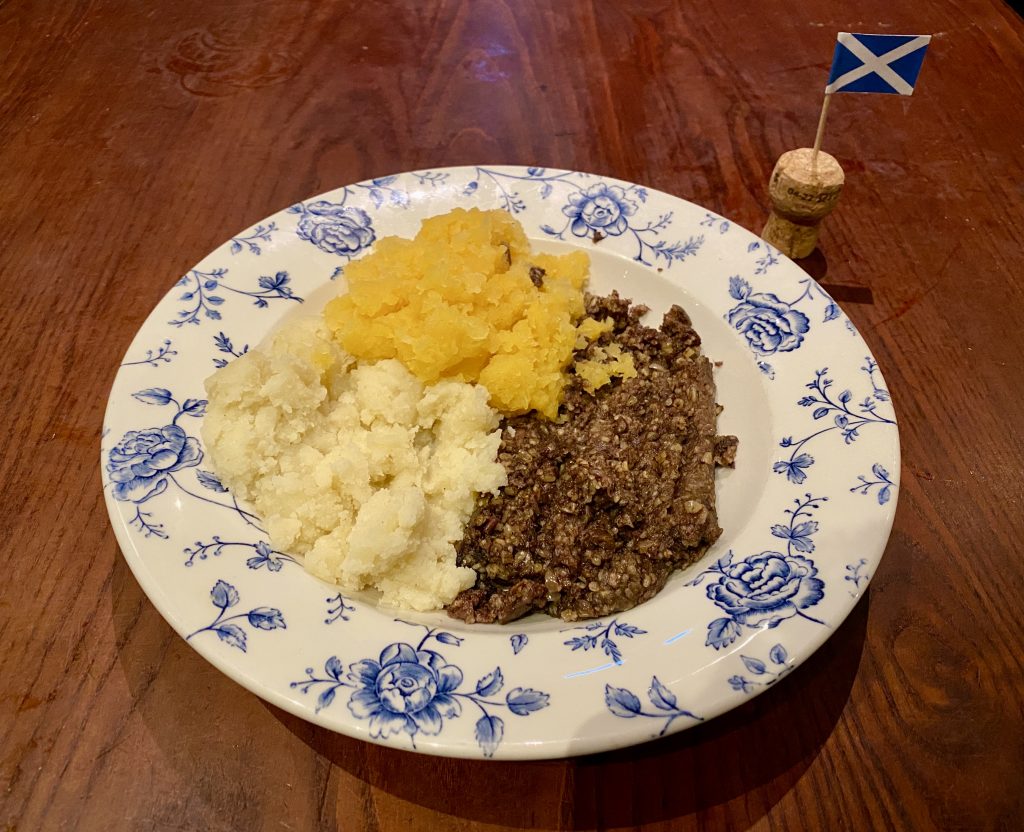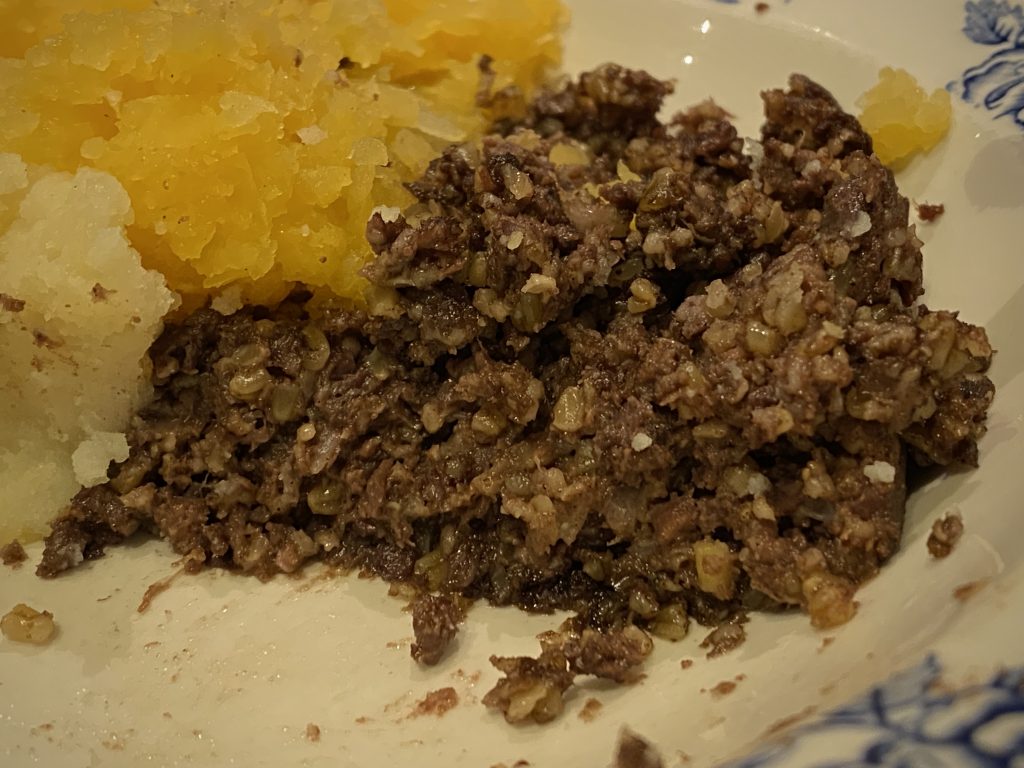
When I describe The Tribudishional Food Blog to people for the first time, I’ve found the conversation almost always follows the same pattern: an explanation of the idea behind it (i.e. traditional food in weird places), a dissection of the name (Tributes to Traditional Dishes), and an example of a post you might find on the blog.
It’s usually best to exaggerate what might constitute a ‘Tribudishional’ meal, and I often turn to “Haggis in The Maldives” as the perfect example.
Now, a J D Wetherspoon in Sheffield isn’t quite the same as The Maldives… but it’s certainly an unlikely place to find Scotland’s national dish nonetheless. The 25th January is Burns Night you see, and for a limited time only, Wetherspoons served the iconic Scottish trio of haggis, neeps (turnips) and tatties (potatoes).
But hold on, isn’t haggis served in a sheep’s stomach? Well traditionally yes, although nowadays artificial casings are commonly used. Cow intestine is another, more versatile option, as the haggis’s portion size is more easily controlled (as opposed to the fairly consistent proportions of a sheep’s stomach). Indeed, it’s cow intestine that’s used by Simon Broadribb, the recent winner of the title: ‘Best Haggis-maker’ at the world charcuterie awards. Not bad for an English fellow.
Now none of this sounds terribly appetising, and if you’re familiar with haggis, you probably know that its filling – on the face of it at least – doesn’t sound that much better. Minced ‘pluck’ (consisting of sheep’s lung, liver and heart) is mixed with oatmeal, onions and suet, along with spices and stock, forming a sort of meaty porridge. This is stuffed into the casing, and the whole thing is gently boiled. Yum.
And I say that with total seriousness, as haggis – when done well – is truly delicious. Mace and white pepper are usually the primary elements of the spice mix, and they lend the dish a beautiful warmth and deep nuttiness. In my case, this flavour profile complimented the sweet neeps and salty tatties wonderfully. My only slight criticism would be the strength of the white pepper, as I found it slightly overpowering.
The haggis’s texture was even better; somehow both flaky and moist, the chewy filling was near spot-on – something quite hard to achieve in a Wetherspoons microwave.

So, why haggis on Burns night? Well, Scottish poet Robert Burns (the birthday of whom is celebrated on the night) famously wrote the poem “Address to a Haggis” in 1786. At the time, the dish was simply a common, inexpensive meal – butchers would readily sell their offal so as to avoid unnecessary wastage. It soon became synonymous with him, and people began reciting the poem at the point haggis was served to guests at ‘Burns suppers’. This tradition has grown ever since, as has the popularity and fame of the dish.
So much so, in fact, that somewhat of a folklore has developed with it. Some believe haggis to be a small animal that roams the Scottish highlands, with longer legs on one side of its body to allow easy traversal of steep hillsides (yes, really). This comical notion was circulated extensively online, and actually took hold in the United States, understandable considering most of the country would have never eaten haggis before (due to the 1971 law banning the importation of sheep lung into the USA).
And the confusion around haggis doesn’t end there: what constitutes ‘neeps’ for example, is widely debated. Some believe it to be turnip, others swede, whilst many claim it to be a mixture of the two. It’s a topic Susan Smillie explores in her article for The Guardian, and one that gets quite messy (it turns out a common name for turnips in Scotland is swede).
Whatever the case, Wetherspoons’ neeps were definitely swede-based, and on the whole, lovely. Combined with the generous portion of mashed potato however, I found the flavour got a little monotonous as the meal progressed. A whisky cream sauce would no doubt have helped break up the repetitiveness, but sadly nothing of the sort was present. This silky smooth sauce is typically served with haggis on Burns night, so it was disappointing that it wasn’t included in the dish (especially as it was a part of their other haggis-based menu item, a Caledonian burger).
That being said, I can hardly complain when the whole meal, along with a soft drink, was only priced at £7.50. That’s great for a tasty, filling dinner, of surprisingly good quality. As chief haggis-maker Simon Broadribb says on The Food Programme podcast, haggis is “good, hearty, stodgy food”… and that’s exactly what I got here.
Tribudishional score 7.5/10.

©The Tribudishional Food Blog / 2024
